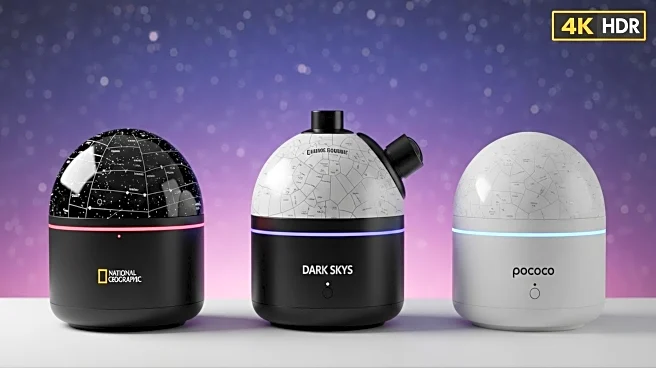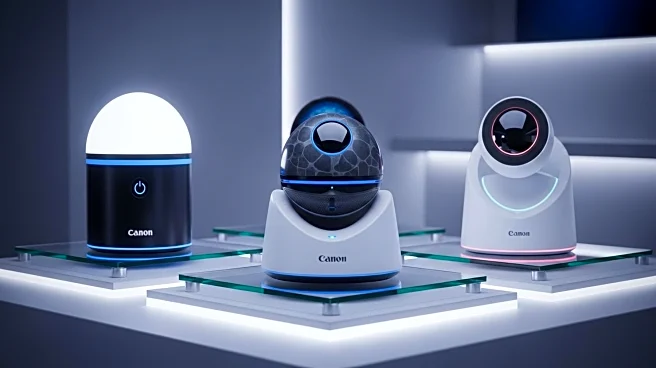What's Happening?
A detailed comparison of three popular home planetarium models has been conducted, focusing on the National Geographic Astro Planetarium, Dark Skys Pocket Planetarium, and Pococo Galaxy Star Projector. Each model offers unique features and functionalities, catering to different user needs. The National Geographic Astro Planetarium stands out with its ability to project images true to a chosen date and time, along with features like rotation, a speaker, and a sleep timer. The Dark Skys Pocket Planetarium is noted for its portability and realistic imagery of Northern Hemisphere constellations, although it lacks some advanced features. The Pococo Galaxy Star Projector offers realistic imagery through disks and includes a sleep timer, but lacks a speaker and remote control. Price points vary, with the National Geographic model being the most expensive, followed by Pococo and Dark Skys.
Why It's Important?
The comparison of these home planetarium models is significant for consumers looking to enhance their educational and recreational experiences at home. The National Geographic Astro Planetarium, with its advanced features, is ideal for users seeking a comprehensive and interactive stargazing experience. The Dark Skys Pocket Planetarium appeals to those prioritizing portability and simplicity, while the Pococo Galaxy Star Projector offers a balance of features and affordability. This analysis helps consumers make informed decisions based on their specific needs and budget, potentially influencing purchasing trends in the home planetarium market.
What's Next?
Consumers interested in purchasing a home planetarium can use this comparison to guide their decision-making process. As technology advances, manufacturers may introduce new models with enhanced features, potentially affecting the current market dynamics. Users might also explore additional accessories or upgrades to enhance their stargazing experience. Retailers could respond to consumer preferences by offering promotions or bundling options to attract buyers.
Beyond the Headlines
The growing interest in home planetariums reflects a broader trend towards educational and recreational technology products that can be used at home. This trend may encourage manufacturers to innovate and develop more sophisticated models, integrating features like augmented reality or app connectivity. Additionally, the use of home planetariums as STEM learning tools could have long-term educational benefits, fostering interest in astronomy and science among users.












